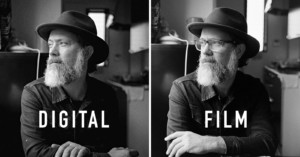
Kodak Cuts Iconic Tri-X Black-and-White Film Prices By Up To 30%
Kodak has reduced the price of its popular Tri-X black-and-white film by up to 30%, making analog photography more accessible.

Kodak has reduced the price of its popular Tri-X black-and-white film by up to 30%, making analog photography more accessible.

Once a staple of photography for the general populace, disposable (or “single-use”) cameras have become something of a niche -- most people who never stopped shooting film or those younger audiences who are coming to it for the first time choose to use an affordable SLR or point and shoot camera. The image quality is quite superior and a single roll of film is less expensive (though typically not by much) than a disposable camera.

The Leica M10 Monochrom is a $9,000 digital camera dedicated to black-and-white photography, but how does it compare to a $10 roll of Kodak Tri-X 400 black-and-white film? That's what the folks at Camera West TV decided to find out.

Everybody loves a camera with history. For me, there is one specific camera with a lot of history and sentimental value: It is a Hasselblad 500C/M that has been in my family for about forty years. It was my grandfather's camera.

French photographer Hadrien Picard was recently put to the test by his friends at Red Bull. In one of their recent "Pressure Shot" episodes, Red Bull challenged Picard to capture a full photo essay with BMX star Matthias Dandois. The catch? He had to capture the whole thing in a single roll of 36 exposures.

Shooting black and white film over digital in the last few years has changed my approach to photography a great deal. The process of shooting film, from the tactility of the Leica M7 and Rolleiflex 2.8D cameras that I use, to developing and scanning, have given me a much deeper appreciation for the craft of being a photographer.

Have you ever heard the argument that digital just doesn’t have the same look as film? Well, let’s put that argument to rest. I have painstakingly made my own Lightroom preset that I believe is 96% the same as my favorite film, Kodak Tri-X 400.

We all know a knockoff when we see it. Fake Rolexes, certain Russian motorcycles, and pretty much anything bought off of a street cart in Hong Kong, these poor quality imitators just can’t match their real deal counterparts. It’s no different in the world of film. And one film in particular has garnered a reputation for being just such a cheap copy—Ilford HP5 Plus.

It came out first in 1940, when Europe was plunged into war but America was enjoying the dying days of calm before the storm. It was Kodak’s new black-and-white film, designed to be shot on location. The only problem was, it was only available in large format.